Wondering what is SEO cross linking and why is still so important for your website and how you can use it for one or multiple of your sites to pass PageRank legally?
In this article, you will learn different types of cross linking in SEO and how to do cross linking and multiple domain cross linking to boost your ranking, and search visibility and avoid being penalized.
Learn how to do SEO cross linking the right way!
What is Cross Linking in SEO?

Cross linking in SEO refers to using internal and external links to connect semantically, contextually, conversion-wise, or any other way related pages between each other. This can mean cross linking between pages within the same website, third-party website, or websites owned by you or the same company. SEO cross linking involves two linking strategies:
- Internal Linking: Connecting related pages on the same website together.
- External Linking: Referring to related pages on a different website. Most often to get these referral links (backlinks) you’ll need some form of link-building & link building strategies.
Both of these SEO techniques are extremely important for your SEO strategy as they tremendously boost your SEO results, especially internal linking strategy as that’s where you have 100% control.
Types of Cross Linking
Because cross linking in SEO can happen in all kinds of ways and there are several different types of cross linking in SEO that you should understand, each that serves different purposes and is executed in different ways, yet all of them bring similar link building benefits.
With that here are four types of cross links in SEO:
- Internal Cross Linking: As mentioned these are internal links that you create from one of your pages to another of your pages on the same domain in order to increase semantic relevancy. This usually involves linking to related blog posts or conversion pages such as product, category, or landing pages.
- External Cross Linking: As mentioned these are external links that you create to link to other websites whether owned by you or not or other websites whether owned by you or not link to your website. External links or Backlinks are one of the most important Google ranking factors to rank high for competitive keywords.
- Domain Cross Linking: These are links that are used by corporate businesses and individuals that own two or more websites and link to each other. Often this involves middle websites or group websites that refer to all the websites owned by that company or individual.
- Natural Cross Linking: These are the external links that you receive or give from or to other websites without any outreach and you or another website chooses to link to your website or you choose to link to them. Natural backlinks are the holy grail that Google wants you to build.
All these types of links are very important for your website and while they bring similar results it’s very important to have a mix of external and internal links for the best results.
Benefits of SEO Cross Linking?
SEO Cross linking is a fundamental part of your SEO strategy because it brings numerous large benefits to your website and without that, your website cannot be found, properly crawled, and indexed in search engine result pages.
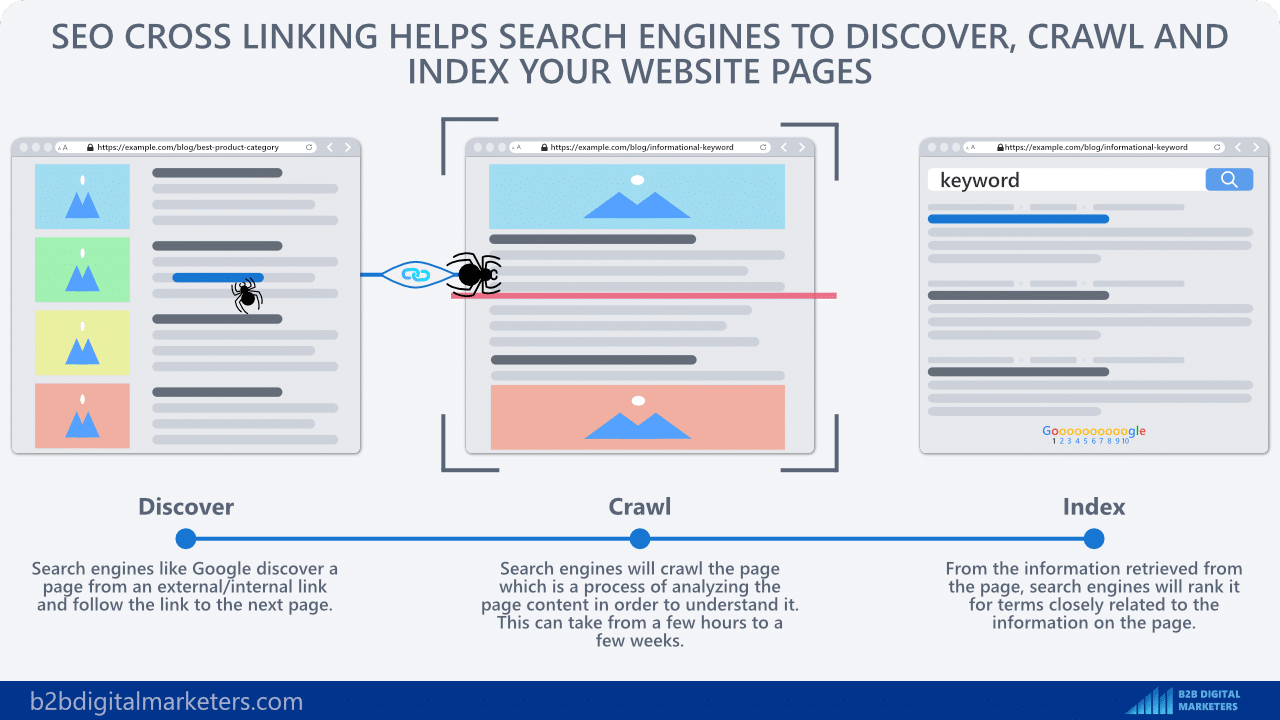
With that here are the biggest benefits of SEO cross linking:
Increase Page Rank Flow
Links pass Page Rank unless stated otherwise. Page Rank is a website authority score that allows you to rank for more prominent or competitive keywords and it used to be that Google showed it until 2016.

And now instead of that, SEOs are using estimated website authority developed by SEO tools such as SE Ranking and their domain trust score.

With that, external cross linking helps you to bring that valuable Page Rank (AKA link juice) to your website in order to increase your website authority.
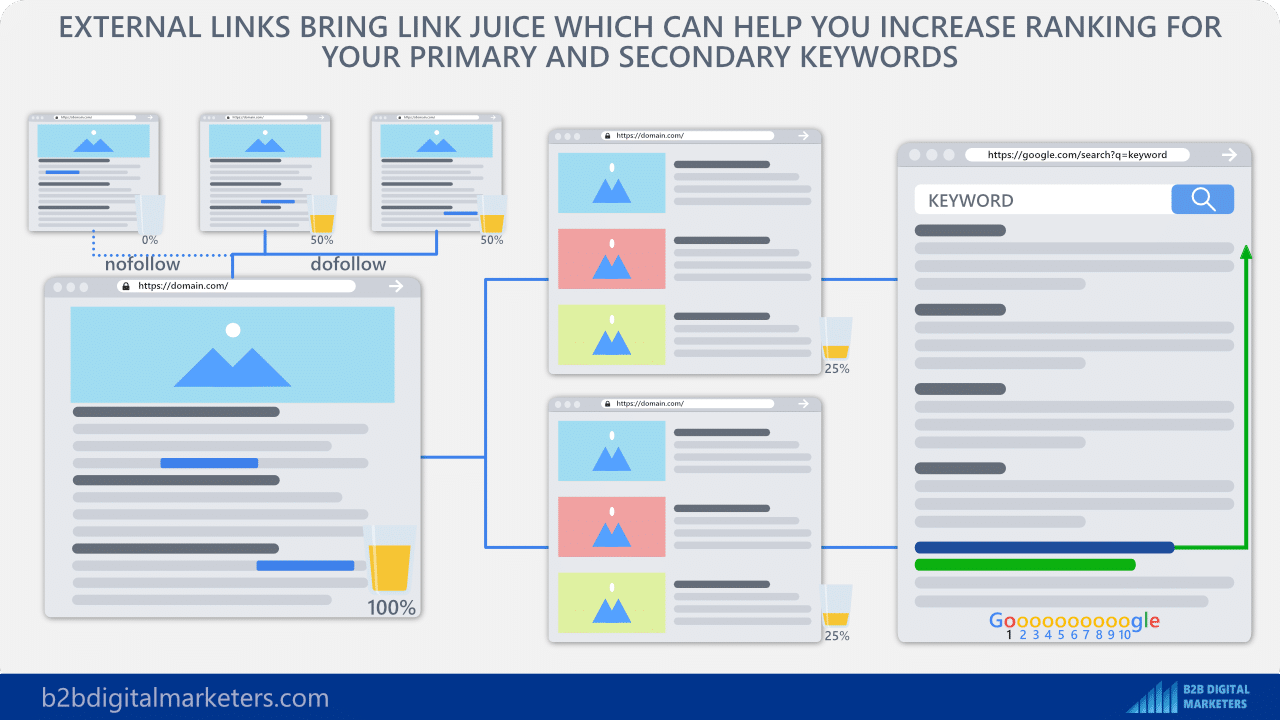
And internal links help you to spread that link juice across important pages in order to boost your ranking across all your pages.
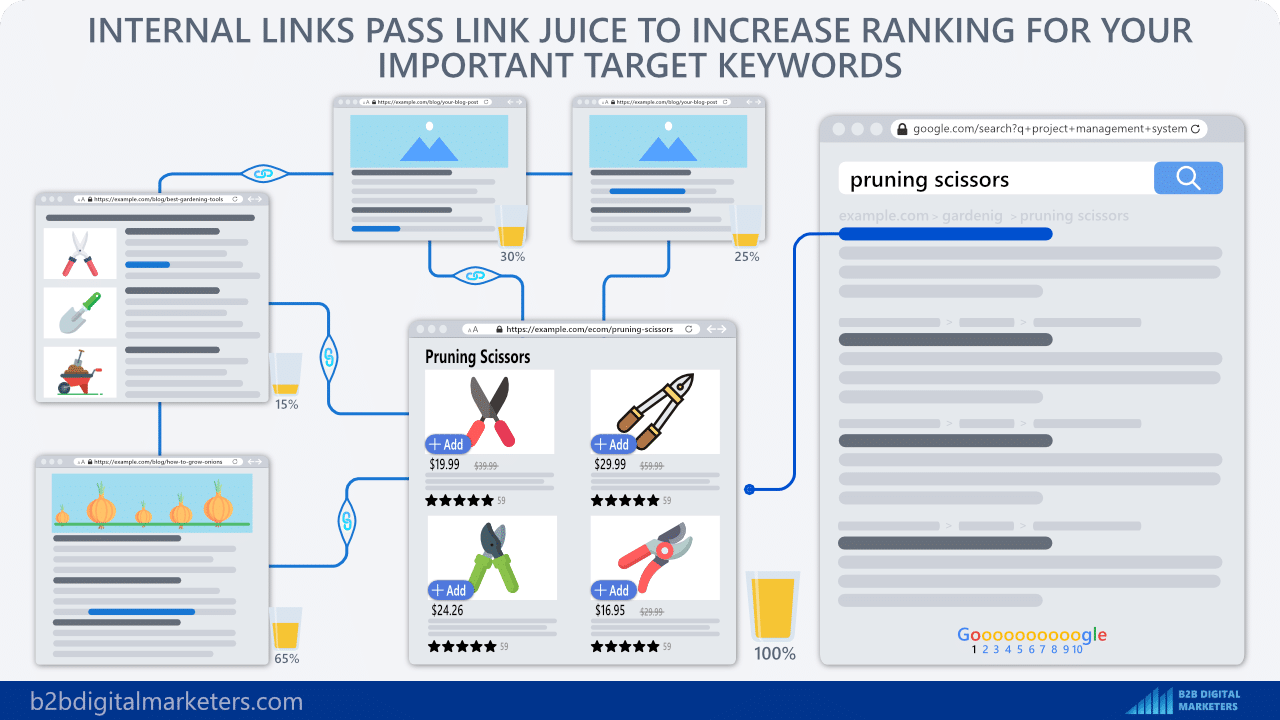
Because remember, Google does not rank websites, but pages and you want to distribute your Page Rank across all pages that are meant to be ranked in SERPs.
Help Search Engines Find Your Pages
The #1 way for search engines to discover the internet is to crawl links. That’s why it’s so important to have external links or backlinks coming to your website and then internal links so search engines can get deeper into the rabbit hole and find all your pages.

Helps Search Engines Better Understand your Pages
Search engines like Google are using external and internal links to better understand your content. They look at the anchor text to get more context on what’s the page about and improve its ranking for related keywords.
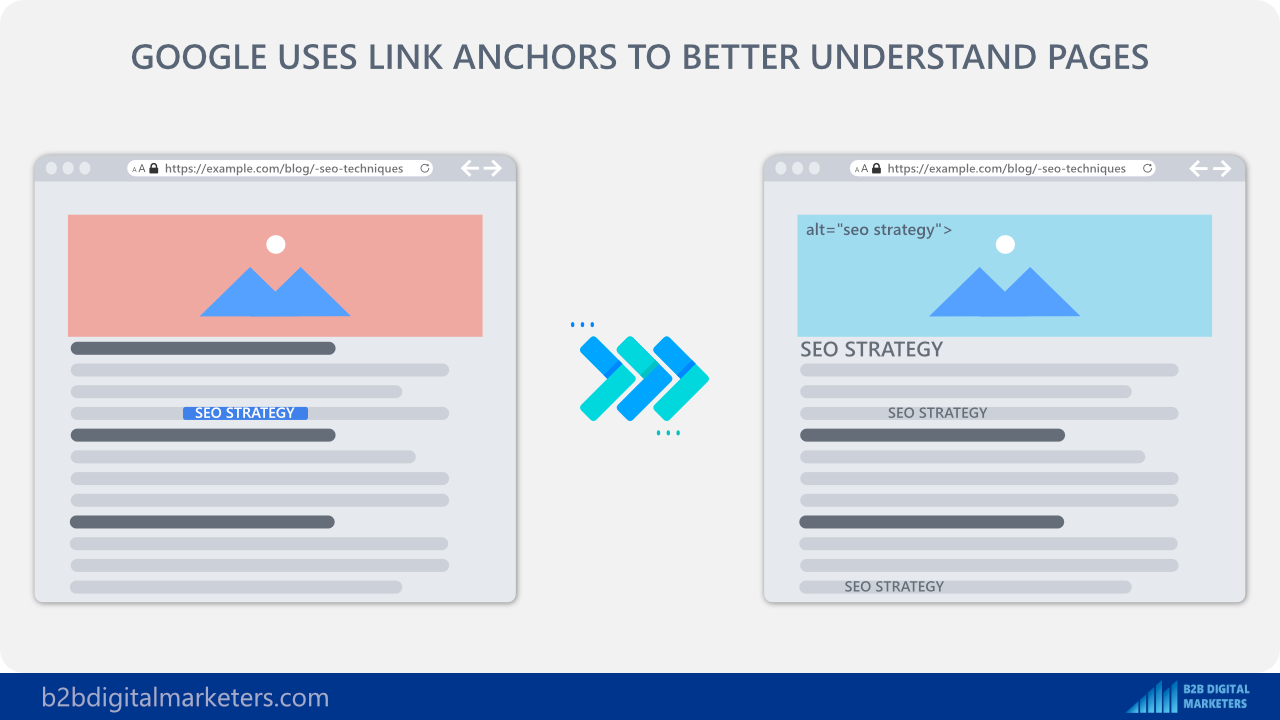
Therefore, having internal and external links with exact match keywords as well as related explanatory anchor texts pointing to your pages will help Google to better index your content.
This also has been confirmed by John Mueller:

Improve Ranking & Search Visibility
And all these SEO cross linking benefits will lead to improving ranking for your primary keywords, secondary keywords as well as any LSI keywords you are targeting. It will also improve to rank for more SEO keywords which ultimately leads to more search visibility and more traffic to your website.
That’s why links are so crucial in SEO!
How to Do Cross Linking in SEO
If you don’t count the outreach process then the process of internal and external SEO cross linking is the same.
However, there are three primary reasons why you would do cross linking:
- For Relevancy: This is when you are adding or getting internal or external links based on some relevancies be it citing or referencing. This is to help users to get more information about a particular topic and ease the navigation thus improving UX.
- For Conversions: This is when you are adding or getting links for purpose of navigating your users to a page that is meant to be converting your website visitors.
- For Link Building: This is when your purpose of cross linking is to pass the link juice from one website to another website.
With that, of course, there can be multiple reasons when you are doing cross linking in SEO such as when you are adding internal links from your blog post to your product it can be for relevancy and conversion purposes.
Or when you are doing guest blogging and adding backlinks to your page it can be for relevancy as well as for link building.
Relevancy SEO Cross Linking
In most cases when you are doing SEO cross linking for relevancy you will be linking from one of your blog posts to another of your blog posts and product or service pages.
And in most cases, you will be using your target primary keyword as your anchor text.
For example, I just finished my article targeting the primary keyword “guest posting” and to create internal links I just need to find where in other of my blog posts I mentioned the keyword “guest posting”.
And to do that, I can use the Google operator and add the keyword (site:example.com “guest posting”) in my case it would be site:b2bdigitalmarketers.com “guest posting”

And this will show me all the pages where I have mentioned the keyword “guest posting”.

So now I just need to edit the page with the link pointing to my blog posts about guest posting.

Or when you are referencing some stats or someone. For example, I have linked to John Mueller’s tweet in this article as a reference.
Or when you are mentioning certain statistics, you should include the source just like SE Ranking did here.

All these and more are the exact reasons why using cross linking for relevancy is important, it helps users, and search engines, improve your EAT and the quality of your content.
Also remember, when you are writing an article you will naturally mention the primary keywords you have targeted already, so don’t forget to add internal links from your new blog posts to your past blog posts wherever it is relevant.
Conversion SEO Cross Linking
Conversion SEO cross linking is basically when you want to bring your users somewhere to convert them into customers. Usually, this only includes internal links, but in cases such as affiliate links, it can be external links as well.
Again, there are numerous ways to do this, depending on the type of website and conversions you are doing.
For example, if you are an eCommerce site, then obviously you will link from your category pages to your product pages.
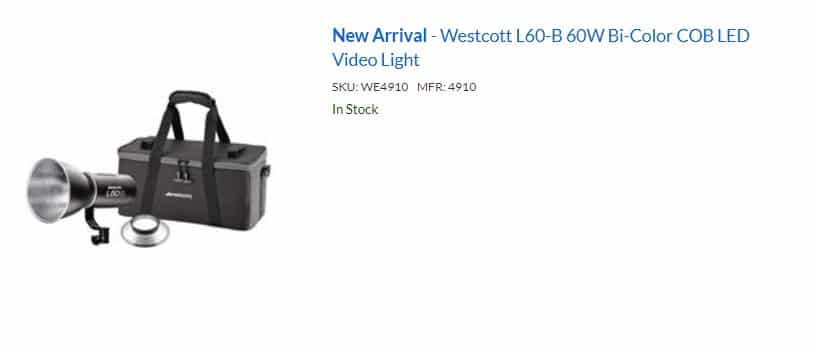
Or adding banners in your blog sidebar to your landing page is another example of doing SEO cross linking for conversions.

Or using CTAs such as buttons to navigate your users to the landing page.

Or having your business or product profile on business directories, website reviews, etc. with a link to your website is another way to do SEO cross-linking for conversions.

Or lastly, in affiliate marketing, this can be, when you are linking to one of the products you have mentioned within your article.

Again all these and more are examples of SEO cross linking for conversion rate and as you can see, different purposes change the way how you add those links.
Link Building SEO Cross Linking
As obvious as it sounds I gotta say it, SEO cross linking for link building is to get the valuable link juice pointing to your website from another website.
And you can use the same technique I already showed you with Google operator.
For example, if a website searchenginejournal.com would allow me to insert a link and I wanted to link to my guest posting article I could use the same Google operator technique to find searchenginejournal.com pages where the keyword “guest posting” is mentioned and ask them to insert it there.

However, getting backlinks with exact anchor text is dangerous, to say the least, and you want to use different anchor text every time.
So, to get ideas you can analyze the top-ranking page keywords and use those as anchor text to ensure you never repeat anchor text when building backlinks.

Another example of cross linking for link building could be unlinked mentions. This is basically when somebody mentioned you or your brand but did not add a link to your website.

So, you can hit them up and ask them to link to your website for relevancy purposes.
Or being listed as one of the best products, resources, services, etc. is another way to get backlinks.
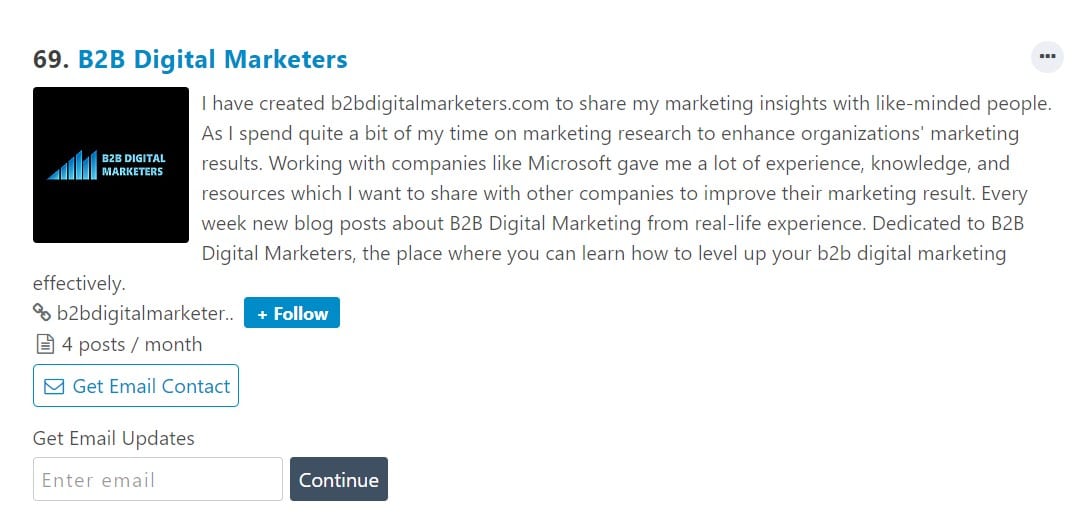
And again, there’re many different ways you can do SEO cross linking for link building, but in most cases, you will be getting a link from a blog article pointing to your article, product, or service pages and I believe you got the point.
However, with backlinks, there are a lot more ways and rules that you need to follow in order to not get penalized and get the best SEO results.
So, I recommend you check out my articles on link building to follow the best link building practices:
- Best 13 Link Building Strategies: To Grow Your Domain Authority
- Resource Link Building: Complete Guide You Need
- Best 11 Strategies to Build High-Quality Backlinks for Website
How to Do Multiple Domains Cross Linking
If you are a business or individual who has a portfolio of sites, then you can do multiple domain cross linking which means referencing other of your sites.
Domain cross linking is a process of adding links between two or more separate domains owned by the same company or person. It’s basically link building strategy only you don’t have to do a blogger outreach process.
Now, it used to be, that big media sites used their footers for SEO to link to their other sides to gain quick authority and as explained by Glen from Detailed.com, a large part of the internet is owned by a few brands with many websites.
This gives them total Google control because they have already many domains with big authority that allows them to distribute that in any of their websites as they need and please.
However, as explained by Matt Cutts in this video:
You cannot simply link to your website without any relevance, that is spammy and manipulative, which is against Google quality guidelines.
So, these big brands do not use footer links anymore to avoid Google penalties due to manipulation, so there is a new and cleaner way how to still distribute the link juice using domain website cross linking.
What you need to do is to create a company group website and from there you link to all your websites and all your websites link to that ONE company group website.
For example well know sites such as:
- investopedia.com
- thebalancemoney.com
- allrecipes.com
- seriouseats.com
- simplyrecipes.com
- And many others
Are owned by Dotdash Meredith media company, so they link to all of their websites.
And this is perfectly fine because the relevancy is there as it’s their websites and they can and should reference their sites for shareholders and others.

But they also link from every of their super highly authoritative website to their main company group website, which allows them to accumulate a massive website authority that they can distribute back to their sites.

And again, they can do that, because the website should clearly display who the owner is. Therefore, this is not against Google’s quality guidelines.
And if you look at their website authority, you can see they have only a few referring domains, but massive website authority.

Normally, a website needs 10s or 100s of thousands of referring domains to get this domain’s trust.

But the Dotdash website needs only a fraction of that because their portfolio of massive authority sites is linking to them.

So even if Dotdash Meredith decides to start a completely new site, they will very quickly boost it to top searches in a matter of a few months as have the asset to do that.
Therefore, if you own two and more sites, you should start thinking of doing domain SEO cross linking as it allows you to gain massive authority and distributed across.
Also, check out this video by Matt Cutts about having 20+ domains and how to cross-link them where he mentioned avoiding using a footer to mention all your other websites.
SEO Cross Linking Best Practices
To ensure you are not getting in trouble with SEO cross linking while getting the best possible results, I have prepared for you some of the SEO cross linking best practices:
Create Internal Links to Every of Your Web Page
As mentioned, internal links are extremely important. Therefore, if you are creating a page that is meant to be ranking, you should create internal links to it, be it a blog post, product or service page, or any other page.
To do that, you can use the Google operator method I showed you earlier. Or you can use a WordPress plugin such as Link Whisper that gives you internal link suggestions.

However, be careful with that, it’s not totally accurate, but still very useful.
Also, I recommend you create proper hub pages to ensure you are connecting all your content, especially when you are having a large inventory of content like blog posts.
Here is a graphic example of content hub pages:

Remember, your goal is to keep crawl depth between 1-3 for pages that you want to rank high in SERPs.
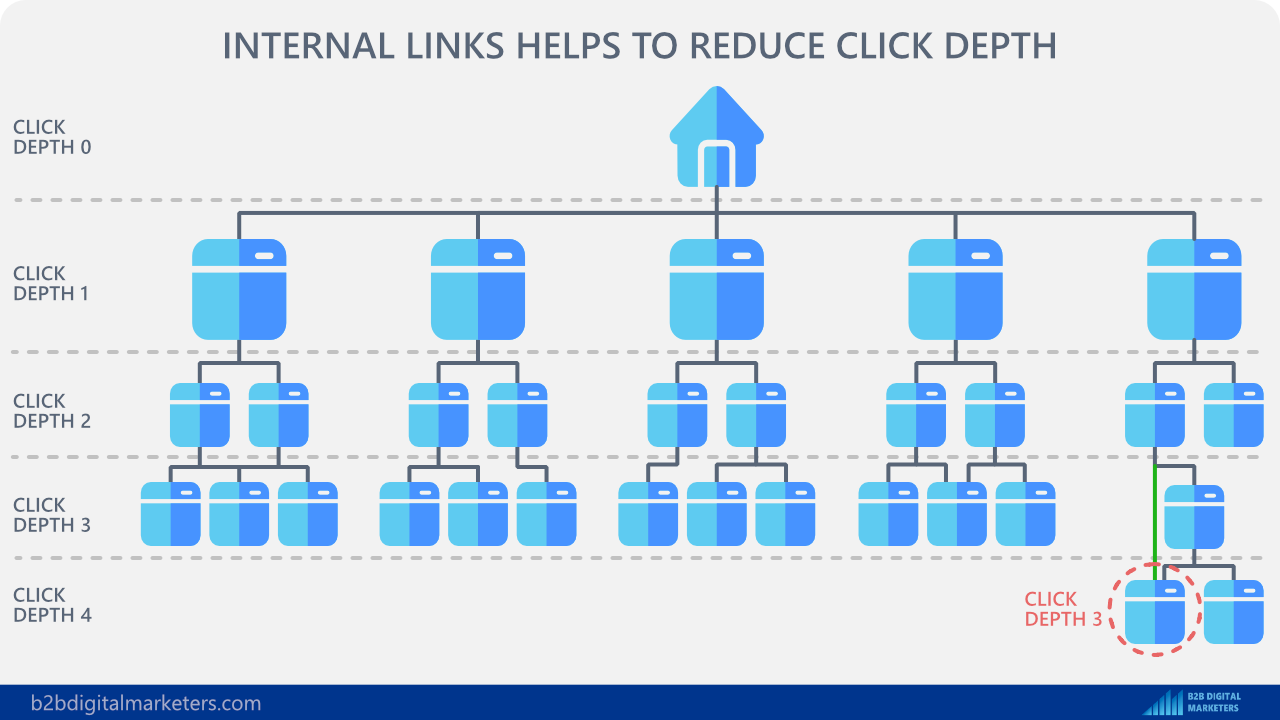
Use Meaningful Anchor Texts
When you are creating an anchor text, be it internal or external, avoid using general words like “click here”, “learn more”, “visit here”, etc.
As explained, search engines are using anchor text to get additional context about the page, so don’t waste any opportunity to help them better understand what’s your page about.
Especially website owners like to use these generic anchor text on homepages or product pages to navigate to other important pages.

From an SEO standpoint, they lost an opportunity to give more information about this page. Instead of using this generic “learn more” anchor text button, they should use “Visit Economics for Sustainability and Profitability”.
Remember, longer anchor texts are not treated any differently by Google, and as said by John Mueller:
“However, using more words in anchor text provides more context to Google about the page being linked to. And more context can indirectly impact rankings.
The more context Google has about a page, the more effectively it can rank a page for relevant queries.”
Remember, anytime you want to optimize the page for SEO, the anchor text is super important, and this applies to both internal and external.
But with external links, you want to follow the anchor text ratio which I’ll talk about later.
Make Your Links Crawlable
One of the biggest SEO mistakes you can make totally by accident is to make your links not crawlable by search engine bots.
The first piece of advice by Google is to ensure your links have <a> tag with an href attribute because links that use other formats won’t be followed by Google’s crawlers.

Another mistake that can make your page uncrawlable is by blocking it with a robots.txt file.

If by mistake you, your team, or your agency block access to some parts of your website or just a single page, search engines will not crawl and index that page.
To see whether your robots.txt file is blocking anything, just put behind your URL domain name robot.txt file, e.g.example.com/robots.txt and you will see what directories or pages are being blocked.

If you are using WordPress, then the/wp-admin/ folder should be blocked by crawlers and if you are using Cloudflare, then those two cdn-cgi thingies as well.
You can also see what’s blocked by the robots.txt file in your Google Search Console.
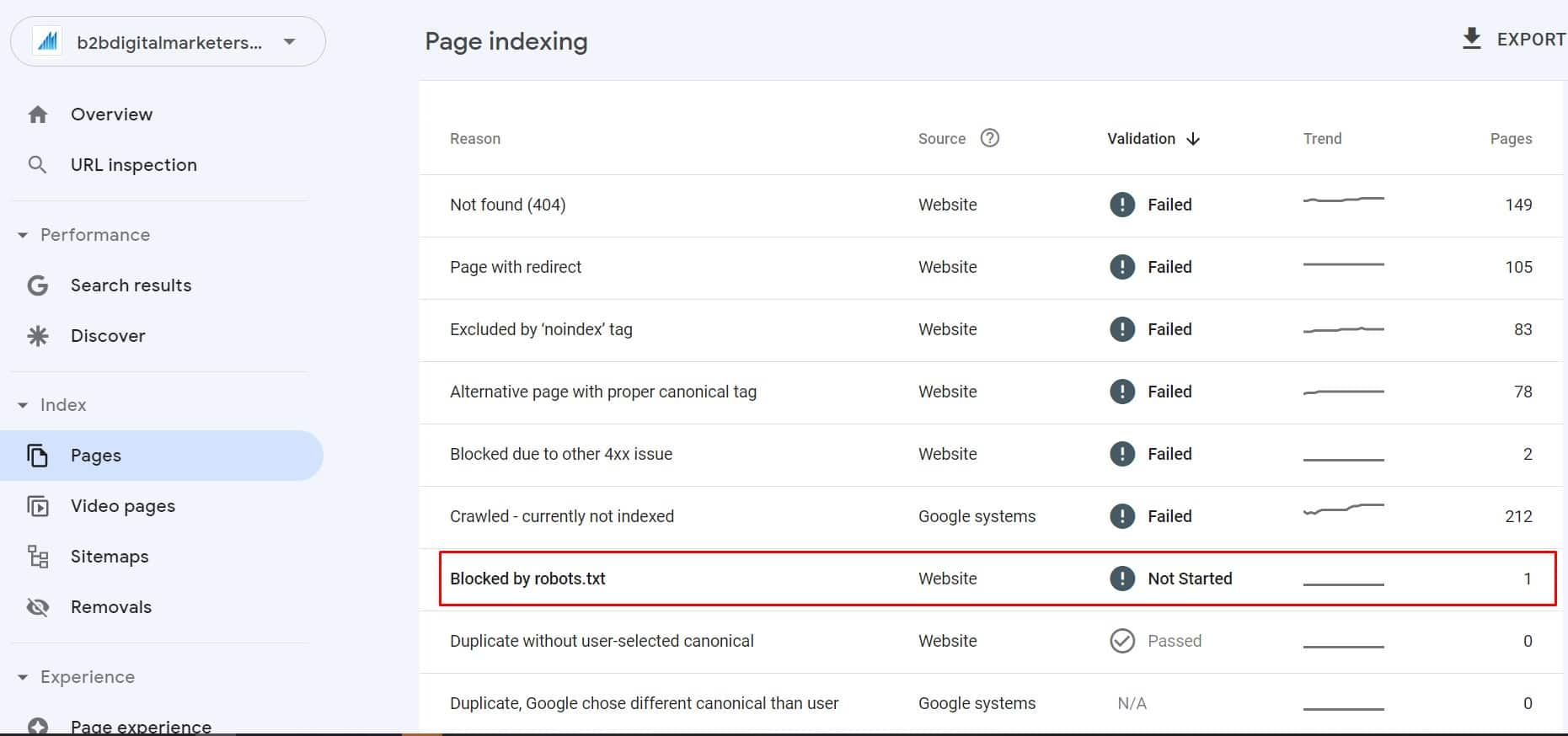
Focus On SEO Website Architecture
SEO website architecture is arguably one of the most important aspects of your whole SEO strategy and you should plan your SEO keyword targeting with an internal linking strategy to improve your page depth, crawling, indexing, and ranking of your page content.

It’s essential to plan your SEO website architecture together with all your topic clusters, as well as folders such as services or products, and make a logical content structure.
All this will make your job much easier when you are planning your content as well as what internal links you will need to point to the particular article.
For example, if you look at this mindmap using Mindmeister you can see all the primary target keyword that each represents a page.

(I prefer using mindmaps rather than excel as it is easy to see and plan your keyword targeting, topic clusters, and internal linking strategy)
Like this, I already know what keywords I need to mention within my articles so I can create internal cross linking.
And you can see that all the keywords under the “lead nurturing” category should have links to the page “lead nurturing” and at least a couple of those keywords should also be pointing to the “Email Marketing” and “Content Marketing” page as well.
Lastly, you want to ensure that all your pages have internal links pointing to them to ensure you avoid any orphan silos or orphan pages.

Unless it’s intended, such Google Ads landing pages will often not have any internal links coming in or out for tracking purposes.
Header links and footer links are one of the most important elements for your SEO cross linking strategy as it allows you to strategically place internal links to the most important pages on your website such as product, service, solution pages, or blog posts.
Obviously, your header menu is the most important UX cross-linking element as it is the first thing people see when they visit your website (unless it’s a PPC landing page that has a menu removed).
While footer links are having less exposure as around 2-5% of people scroll all the way down to actually see your footer.
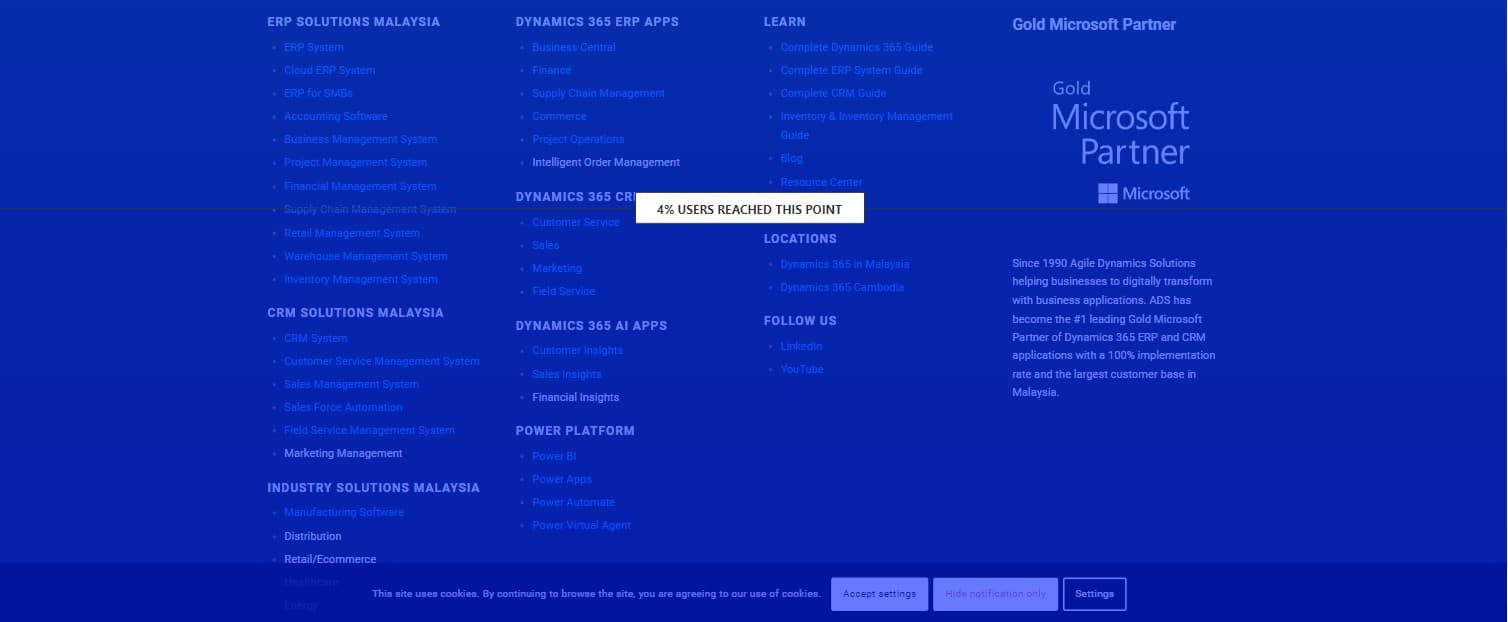
However, search engines do scroll down all the way and crawl those links. Therefore, you should strategically include cross-links in your footer as well.
Don’t Worry About IP Address
The IP address has very little or non-impact on your SEO and if you are using domain cross linking then having two or more websites on the same IP address is perfectly fine.
An IP address only matters if you are running PBNs otherwise you don’t need to worry about this.
It can only matter if your website is sharing an IP address with some very very spammy, like straight-up hosting malware from their site.
The reason why is that many websites are hosted on the same IP address when using shared hosting and if they are in the bad neighborhood of sites, then Google should not punish your site for that.
Focus on Conversions/Sales
Once you are creating a website, your #1 goal is to make conversions or sales, regardless you are in affiliate marketing or selling products or services.
Of course, every type of business will use different strategies to make sales or conversions, but all of them should be focusing on making those.
Because remember, traffic doesn’t pay the bills!
With that here is one of the best SEO cross-linking strategies to boost your ranking and most importantly conversions regardless of your industry!
- Create topic clusters around your best-selling or main products or services.
- Target informational, commercial, and transactional search intent keywords within the topic cluster
- Use internal links to connect them together.
- Build backlinks to your informational keywords using external cross linking strategies.
- Pass the Page Rank to your money pages. (Pages that target commercial and transactional keywords.)
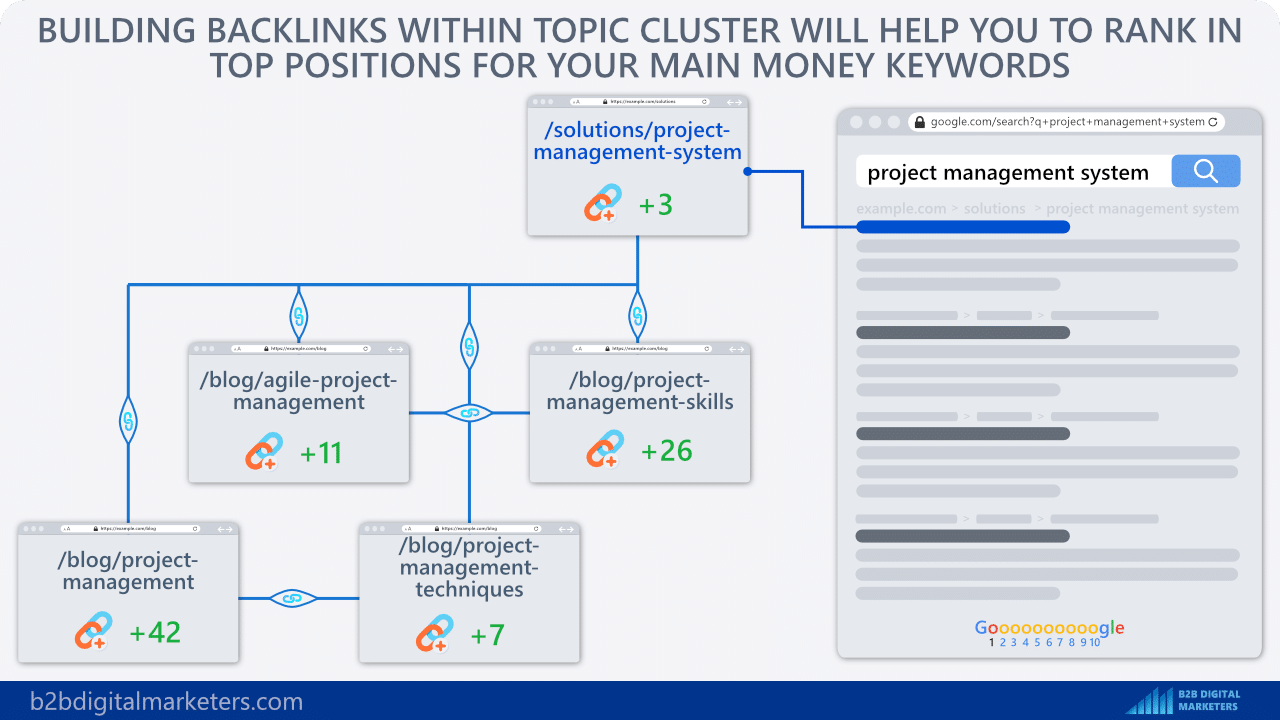
To learn more, look at my article about SEO lead generation.
Follow Anchor Text Ratio
And the very last SEO cross linking best practice I have for you is to follow the proper anchor text ratio for your backlinks.
One of the biggest linking building mistakes you can make is over-optimized your anchor text which can get you penalized faster than any other dodgy strategy.
Therefore, it’s important to follow the anchor text ratio, here you can see my recommended anchor text ratio for cross-linking.

So, every time you are going to build a backlink to your page, check how your anchor text profile looks using SEO tools such as SE Ranking Backlink Checker. Just pop in your page URL, and change the crawl setting only to URL.
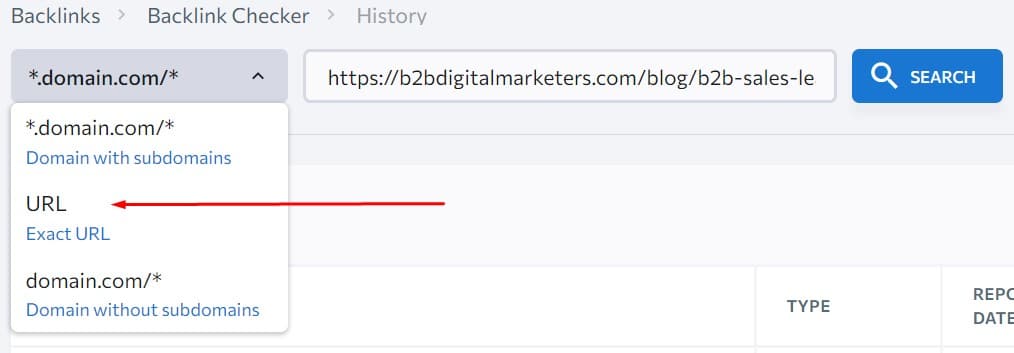
And here you can see exactly what your backlink anchor text looks like.

And like this, you know if you are over-optimized or you’re good.
You definitely want to avoid being this guy with over-optimized anchor text. This would definitely get you penalized unless you are a big brand like PC gamer, then you can do whatever you want apparently.

Conclusion
SEO cross-linking is a complicated process and you need to know its purpose of that. It’s different if you are doing external cross linking from internal cross linking.
On top of that external cross linking will be different from each other as well and that same applies to different internal linking strategies as well.
That’s why you need to know what you need to do and follow the best practices for that particular case.
I hope you like my article; do you have some comments, did I forget something? Leave it on my YouTube channel, CAU!
Related Articles:
- How to Add Keywords in WordPress? [Guide for Beginners]
- B2B SEO Best Practices & Tips That Actually Works [Latest Edition]
- What is CTR Manipulation and How to Increase CTR in SEO
- Local SEO for Doctors Clinic and Medical Specialist – Doctors Marketing Best Practices
- B2B Blogging: Best Practices, Tips and Tricks
- How to Sell Leads to Companies and Brokers
Also, check out our SEO hub page to find all our SEO resources.
Disclaimer
This article was created by Eduard Dziak and may contain affiliate links. The following were used to optimize the article for the best user and search engine experience include:
- SE Ranking for keyword research and on-page SEO optimization
- Surfer SEO for SEO-friendly content creation for users and search engines.
- Jasper AI for grammar correction and information enhancement.
The article is based on the author’s own experience and knowledge, drawn from both their own work and that of their clients, to provide the latest, proven methods.
Support the B2BDigitalMarketers
Hey, Eduard here.
As a solo blogger with limited resources, I need your support to keep creating in-depth SEO content like this. Please consider joining my Patreon community to help this site grow.
Your pledge – no matter how small – will enable me to dedicate more time to sharing actionable tips and strategies. With your help, I can take this project to the next level and really make a difference for other SEOs and marketers.
I would sincerely appreciate you joining me on this journey as a founding patron. Together, we can build an amazing resource hub. Hope to see you on the inside – thanks for your trust and support!








